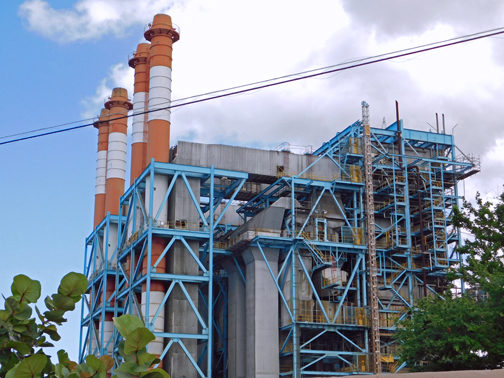Moody’s: Recovery prospects for PREPA bondholders down to 35% after storms


Moody’s: Damage from the storms will add to PREPA’s financial stress and is likely to reduce ultimate recovery for bondholders. (Credit: © Mauricio Pascual)
Puerto Rico Electric Power Authority bondholders can expect to recover about 35 percent of their investments due to the business disruption and costs, as well as lost revenues related to damage caused by Hurricanes Irma and María, Moody’s Investors Service predicted in a report released Thursday.
“Our basic analysis suggests recovery values for bondholders of between 35 percent and 65 percent, based on PREPA’s Fiscal Plan, which had been approved by the Oversight Board on April 28, 2017. Hurricanes Irma and María will probably cause recoveries to be closer to the lower end of this range,” said Moody’s in its latest research.
That plan included a separate securitization surcharge in customer’s utility bills, which would support the issuance of securitization bonds, the proceeds of which would be used to satisfy creditor claims.
The securitization bonds were to be issued through a debt exchange with PREPA’s power revenue bondholders, whereby a separate surcharge would be added to all of PREPA’s 1.4 million customer bills to support repayment of the new debt. The transaction would be structured similarly to other utility cost recovery charge (UCRC) securitizations, Moody’s explained.
However, in June 2017, the Oversight Board rejected PREPA’s restructuring support agreement that PREPA had negotiated with its bondholders. Since then, the public corporation has defaulted on a $447 million in debt service payment, filed for a municipal-style bankruptcy under Title III of the Puerto Rico Oversight, Management and Economic Stability Act, and then was hit by Hurricanes Irma and Maria within a month.
Problems were compounded by the back-to-back storms, which caused substantial electric infrastructure damage to PREPA’s assets. Close to half of the island remains without power three months after the first storm hit in mid-September.
On July 6, Moody’s downgraded PREPA one notch to Ca, which connotes bondholder recoveries of 35 percent to 65 percent, Moody’s stated.
“Storm damage, which has been significant, has added to PREPA’s financial stress, which will negatively affect recovery for bondholders,” Moody’s noted.
“Prolonged power loss has already affected existing cash flow generation and could delay, weaken or prevent economic recovery on the island. Another unknown is how federal aid affects recoveries,” it added.
Going forward, PREPA’s credit could be impacted by PROMESA-related proceedings, although significant uncertainty for bondholders remains “given the newness and the complexity of the Title III proceedings, the likelihood of delays due to the number of other debtors restructuring under PROMESA, and the island’s weak economy, exacerbated by the storms,”
Moody’s predicted that the challenges Puerto Rico’s economy is facing, including a population decline, will influence the terms of any debt restructuring.
“Also, the lack of experience in dealing with a debt restructuring, as well as the multiple restructuring cases filed under PROMESA, will weigh on the outcome,” the agency noted.
However, recovery prospects could strengthen for bondholders based on the fact that PREPA is a monopoly, and “since its market position and essentiality of the service enables creditors to be more accepting of a long-term recovery plan. We also believe that the degree of federal aid is a positive development as it addresses a large funding need,” Moody’s added.










